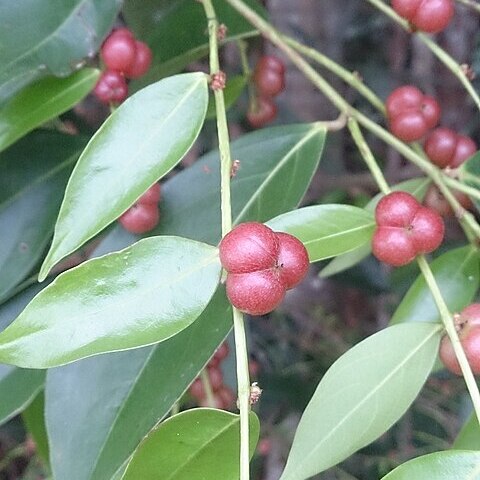Trees 2-10 m tall. Bark pale. Leaves glabrous; petiole 2-5 mm; leaf blade ovate, ± lanceolate, lanceolate, or oblong, 5-13 × 2.5-6 cm, ± leathery to papery, base cuneate to obtuse, apex acute to acuminate; veins 4-9 on each side of midvein. Panicles 1 or 2 fascicled, 4-20 cm; bracts ovate to lanceolate, ca. 0.5 mm, apex acute. Bisexual flower: pedicel 1-5 mm; tepals oblong, 1.5-1.7 mm; filaments filiform; anthers ovoid, ca. 0.3 mm; disk crenulate; ovary conic, ca. 0.5 mm. Female flowers: pedicel ca. 0.5 mm; tepals ca. 0.5 mm; staminodes ca. 0.2 mm; disk lobes smaller than staminodes; ovary cylindric to ovoid, ca. 0.5 mm; stigma cushion-shaped. Drupe orange-red or red, ellipsoid, 1-2.5 × 0.7-1.7 cm; pedicel 1.5-5 mm. Fl. Feb-Jun, fr. Feb-Jul.
A small tree. It grows 6-7 m tall. The branches are slender. The leaves are slightly leathery and narrowly oval. They are 3-10 cm long by 1-5 cm wide. They are often wavy along the edges. They are shiny. There are 4-8 pairs of side veins. The flowers are in the axils of leaves on branched stalks. Flowers can have both sexes or be female. The fruit is fleshy and rounded and is orange-red when ripe.


